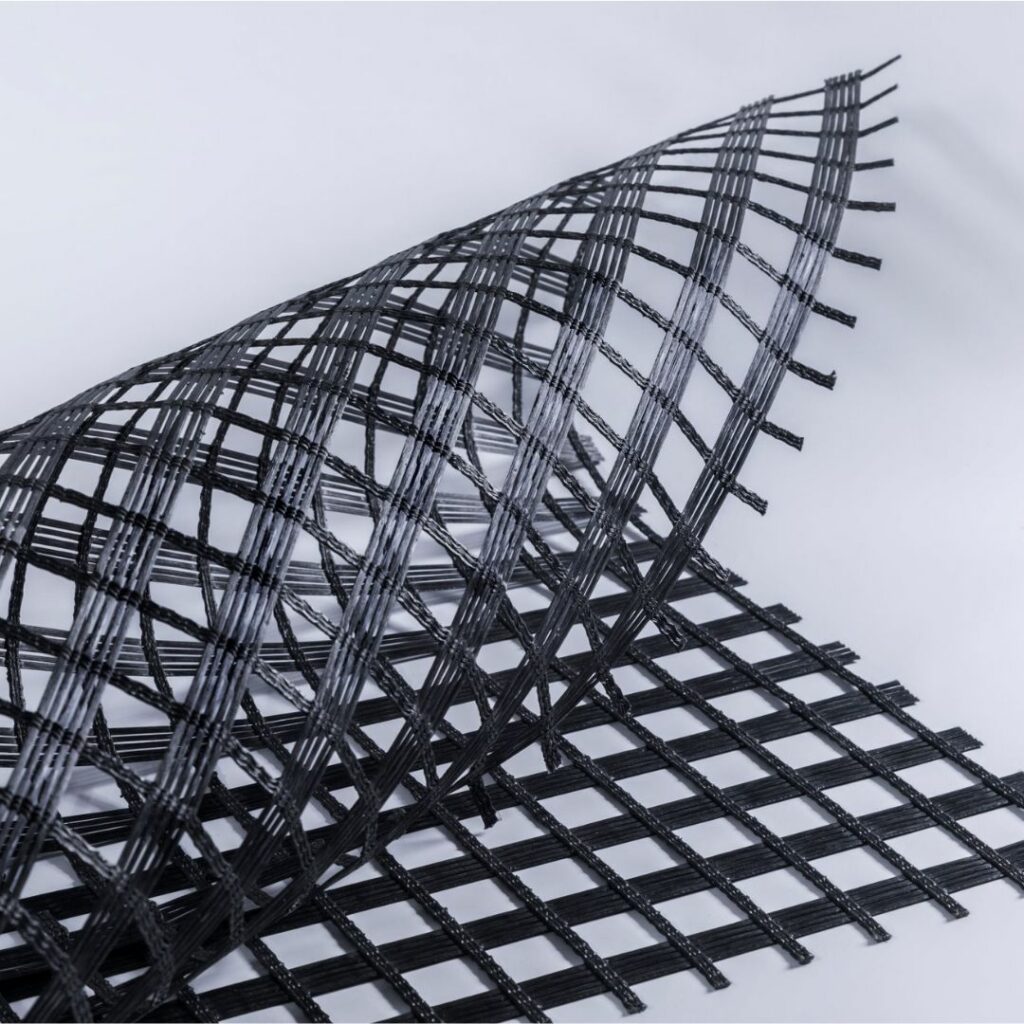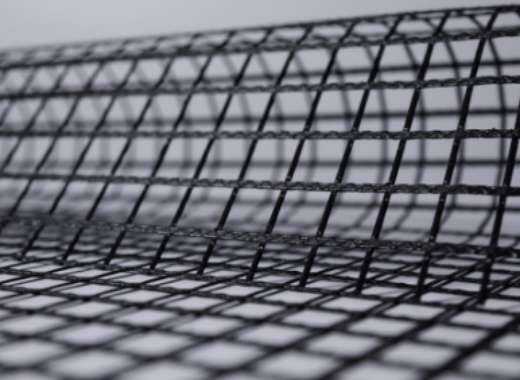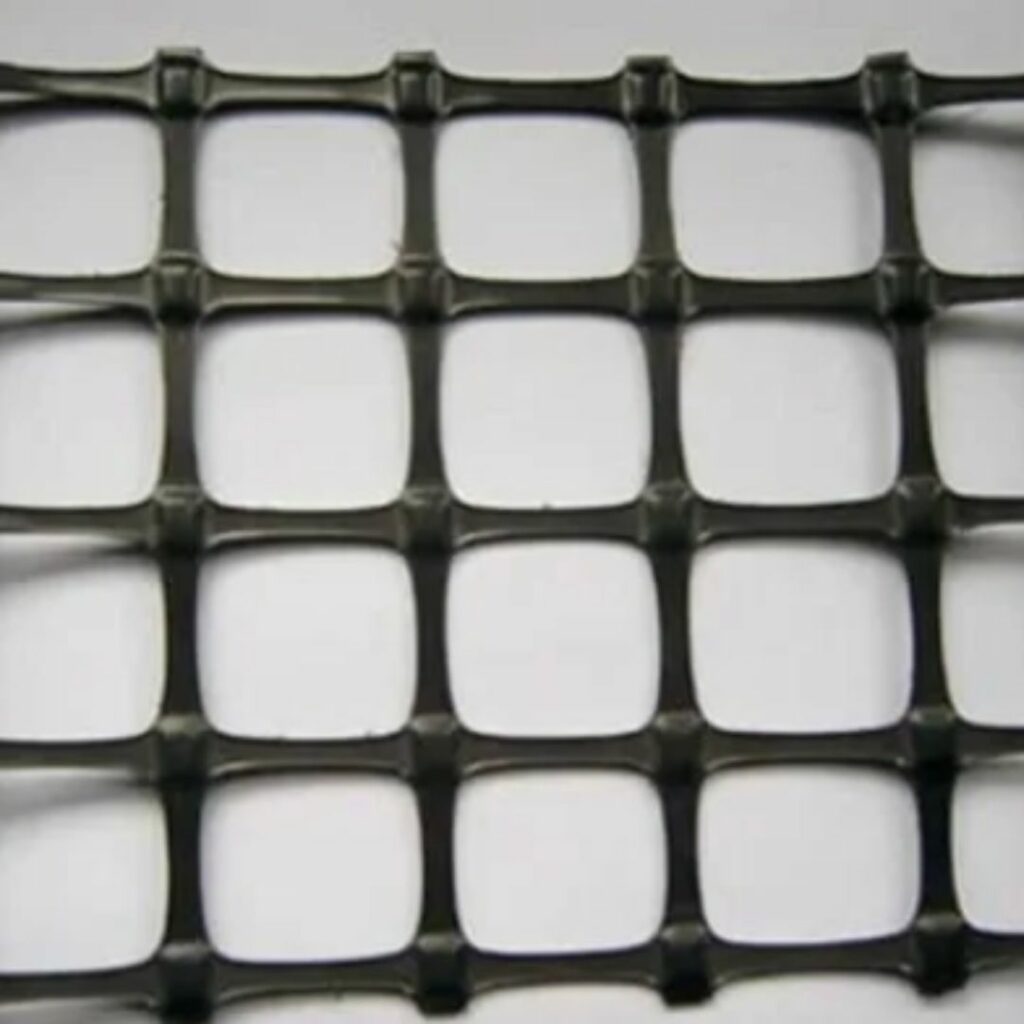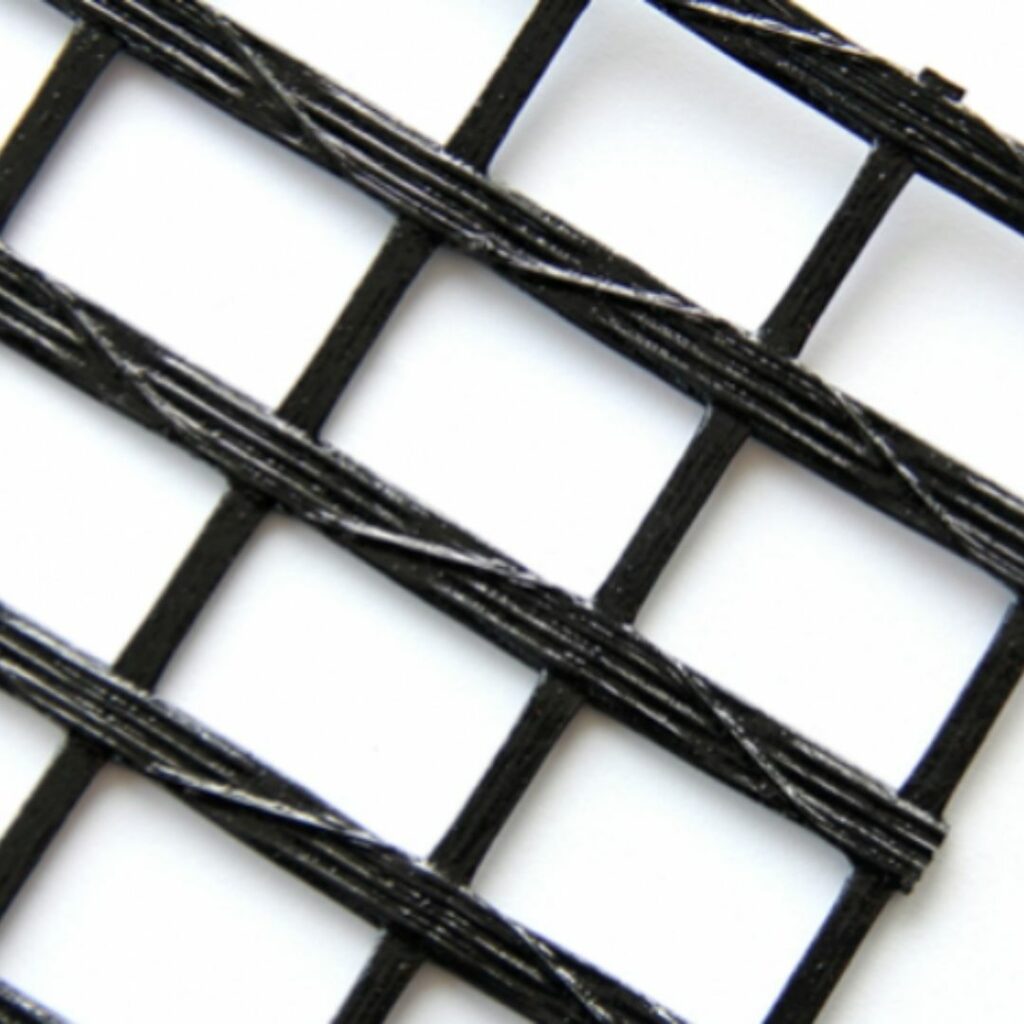What are the types of geogrids and their uses?
Geogrids, geosynthetic subclass, are synthetic materials used in civil engineering to improve soil stability, reinforce structures, and facilitate drainage. These mesh like structures made of polymers like polyester, polypropylene, or polyethylene, provide versatile strength and stability. When combined with the proper infill, geogrids reinforce and stabilise with interconnected tensile ribs, by locking with underlying soil or aggregate. Geogrids are essential for stabilizing soft ground, increasing pavement durability, and reducing road thickness while maintaining strength. Geogrids are widely used in heavy-load and civil engineering projects such as retaining walls, highways, slopes, embankments, erosion control, and in agriculture. Geogrids exhibit remarkable tensile strength comparable in specific applications to steel and concrete.
What are the different types of geogrids?
Geogrid materials are designed for civil engineering needs and are available in different types. Most commonly, geogrids are divided into two categories:
- Based on patterns
- Based on manufacturing.
Let’s look at them based on their patterns, how they are made, and materials are used.
Types of geogrids based on pattern:
1. Uniaxial geogrids- Uniaxial geogrids made from high-tenacity polyester yarn are engineered to provide high tensile strength in one direction, making them ideal for supporting heavy loads. These geogrids are widely used in embankments, retaining walls, and landfill liners constructed on weak soils or steep slopes.Their directional strength makes them especially suitable for reinforcing slopes and retaining structures, helping to distribute loads effectively and reduce the risk of soil erosion. By enhancing soil confinement and structural integrity, uniaxial geogrids contribute to the stability and safety of infrastructure projects.
Available in various strengths, uniaxial geogrids can be customized to meet diverse site requirements. StrataGrid uniaxial (SGU), developed by Strata, is a high-performance geogrid that offers an efficient and sustainable soil reinforcement solution.

The main features of this geogrid which make it different from other geogrids are:
- StrataGrid is crafted from high-quality polyester yarn with exceptional strength and tenacity. The HT yarn is made from PET polymer and has varied characteristics such as high molecular weight (>25000 g/ mol), low CEG number less than 30, and low creep.
- A UV- stabilized unique Polymer Modified Bituminous (PMB) coating provides excellent environmental, chemical and mechanical properties.
- Its design minimizes thermal exposure to PET fibres, preventing polymer degradation and ensuring low elongation for optimal performance.
- Available in strengths ranging up to 800 kN/m and a width of 5.7 m.
- Strata process ensures superior quality, consistency and dimensional stability.
- StrataGrid is ISO 9001-2008 certified.
2. Biaxial geogrids- Biaxial geogrids like StrataGrid biaxial (SGB) from Strata are designed to offer high tensile strength in both the longitudinal and transverse directions. This bidirectional strength makes them well-suited for applications where load distribution is required in multiple directions.
They are commonly used in slope protection, wall reinforcement, embankment support, subgrade reinforcement, soil stabilization, and foundation improvement. Biaxial geogrids enhance the structural integrity of the subgrade, help reduce soil erosion, and improve the overall performance and lifespan of pavements and other load-bearing surfaces.
These geogrids can be tailored in terms of width, length, and aperture size to meet specific project requirements.

What makes StrataGrid™ biaxial (SGB) unique?
The key features of StrataGrid biaxial (SGB) include:
- Exceptional tensile resistance at lower elongations, surpassing conventional solutions in the market.
- Available in strengths upto 200 kN/m and a maximum width of 5.7 m, providing superior reinforcement for pavement base layers.
- Reduces pavement crust thickness, leading to faster and more efficient construction processes.
- It strengthens the structure, reduces settlement problems, and helps prevent soil failure—offering solid support at the base of embankments built over weak ground.
- Contributes to sustainability efforts by decreasing the carbon footprint associated with pavement construction.
Types of geogrids based on manufacturing:
1. Extruded geogrids – Extruded geogrids are created by stretching polypropylene sheets, producing high strength and stiffness in the elongated direction. They vary in strength and stiffness based on the size and shape of their openings and ribs. Geogrids create a strong base layer that distributes weight evenly, reducing stresses and improving load-bearing capacity. Their rigid ribs and thick walls lock aggregate materials, increasing resistance to sliding and movement. Extruded geogrids are available in uniaxial or biaxial forms, and they are used for railway trackbed stabilization, basal reinforcement of embankments, bridge and railway abutments, retaining walls, reinforced soil slopes, reinforced foundation over piles, and reinforcement of granular road base and sub-base.
2. Woven geogrids – Woven geogrids are produced by weaving high-tenacity polyester fibers coated with polymer—such as polyester or polypropylene—into longitudinal and transverse ribs, forming a stable grid structure. These geogrids have a fabric-like appearance with visible threads running in both horizontal and vertical directions, making them suitable for applications involving soil reinforcement, drainage.
They are especially effective in improving subgrade conditions and reducing the quantity of aggregate required in road and railway construction. Woven geogrids are commonly made from polyester or polypropylene and are known for their high tensile strength and low elongation properties. They are widely used in civil engineering projects such as embankments, working platforms, and ground improvement works.
3. Bonded Geogrids – Bonded geogrids are manufactured by joining individual polymer strands or ribs at right angles using thermal, chemical, or mechanical bonding techniques to form a rigid grid structure. These geogrids typically consist of extruded or stretched ribs connected at junctions, providing strength in both longitudinal and transverse directions.
They are commonly used in applications requiring stabilization of weak or soft subgrades, such as in roads, railways, and working platforms. By reinforcing the subgrade, bonded geogrids improve load distribution and enhance the soil’s overall load-bearing capacity, helping to prevent deformation and reduce aggregate thickness.



Understanding the different types of geogrids is crucial for tackling soil stabilization and reinforcement tasks effectively. Each type offers distinct advantages, from traditional woven and knitted variants to innovative geocomposites and eco friendly options. Strata provides reliable results for soil stabilization, earth retention, and soil erosion control projects occupying geotextile and geogrids, earth anchors, walls and slopes, turf reinforcement, revegetation, containment, and more. With our expertise in manufacturing top-quality geogrids since 2004, backed by cutting-edge technology and a commitment to sustainability, we empower you to achieve superior performance and longevity in civil engineering projects.
